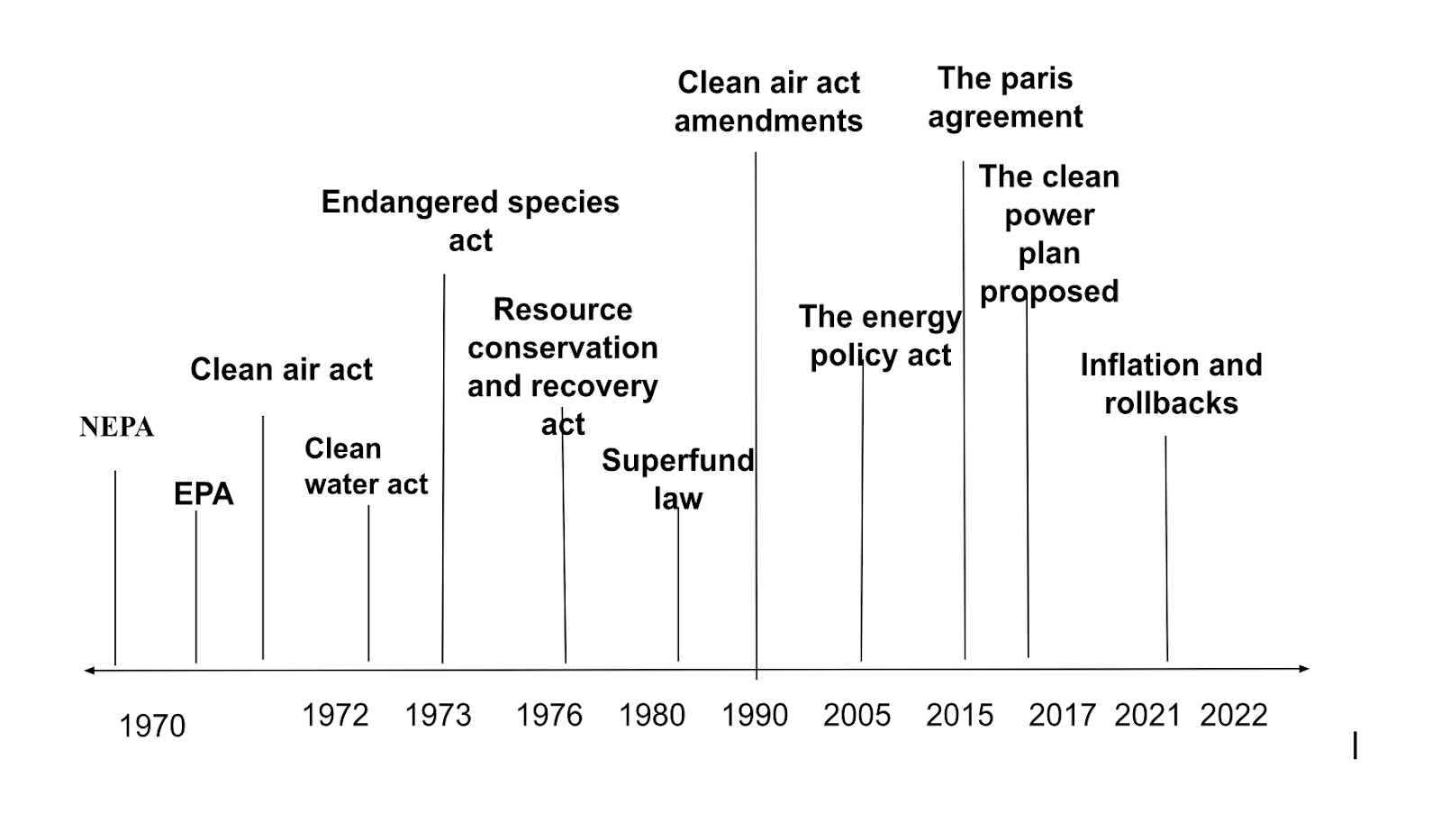Activity 4.1 – US Environmental History and Major Regulations. Group of answer choices
Environmental thought in the United States has changed over time, shaped by social, cultural, and political influences. This change has been driven by a growing understanding of sustainability and how environmental, economic, and social factors are all connected. From early conservation movements to modern concerns about climate change, U.S. environmental views have shifted, influencing the way policies address environmental problems. This post looks at how environmental thought in the U.S. has evolved, focusing on key cultural and intellectual changes.
Before European settlers arrived, Native American cultures had a deep respect for nature. They saw the environment as something connected to all aspects of life, and their sustainable practices reflected this view. Every action humans took was thought to impact the environment and the community. However, when European settlers arrived, they viewed nature differently. They saw it mainly as a resource to be used for economic growth and agriculture. This perspective of nature as something to control and exploit set the stage for future environmental challenges.
By the late 1800s, the harmful effects of uncontrolled resource use became clear, leading to the rise of the conservation movement. Leaders like John Muir and President Theodore Roosevelt worked to preserve natural areas for their beauty, recreation, and ecological importance. During this time, national parks like Yellowstone and Yosemite were established to protect some of the country’s most valuable landscapes. The conservation movement emphasized managing nature in a sustainable way, which aligns with today’s idea of systems thinking. Muir believed that all living things were interconnected and that these systems needed protection from harm.
The 1960s and 1970s brought about a major shift in environmental thinking. Public concern over pollution, resource depletion, and environmental destruction grew, sparked by works like Rachel Carson’s Silent Spring (1962), which exposed the dangers of pesticides. This era saw a broad recognition that industrialization had wide-reaching effects on the environment. Environmental thought began to focus on sustainability, aiming to balance environmental health, economic stability, and social fairness. The idea of the Triple Bottom Line, which looks at these three key areas, gained popularity. New laws like the Clean Air Act (1970) and Clean Water Act (1972) were created to address these concerns and show the government’s commitment to environmental protection.
However, the 1980s brought a shift in political thinking that led to a backlash against many of these regulations. Under President Ronald Reagan, the government pushed for deregulation, believing that many environmental laws were limiting economic growth. The rollback of some regulations was seen as a way to allow businesses to grow. However, balancing economic development with environmental protection proved to be a difficult challenge. As noted in Sustainability: A Comprehensive Foundation (Theis & Tomkin, 2018), policymakers faced obstacles like enforcement gaps and political resistance, making it hard to find the right balance. Cost-benefit analysis tools, which weigh the economic benefits against the environmental and social costs, became key in evaluating policies. However, these tools often undervalued nature and equity, which sometimes led to policies that prioritized short-term growth over long-term sustainability.
In the 21st century, environmental thought in the U.S. has increasingly focused on sustainability and climate change, calling for both global and local action. Systems thinking has become a key tool for understanding how environmental issues are all connected, from energy use to loss of biodiversity. New methods like ecological footprints, carbon accounting, and life cycle assessments (LCA) have been developed to measure the full impact of human activities on the planet. Environmental policies today are shaped by both command-and-control regulations and market-based approaches. Command-and-control regulations set strict limits (like emissions caps), while market-based tools such as taxes and cap-and-trade systems give businesses more flexibility to meet these limits (Theis & Tomkin, 2018). These approaches reflect a growing recognition that flexible, economically feasible solutions are needed to tackle environmental issues.
On the global stage, international agreements like the Paris Agreement (2015) show that addressing climate change requires cooperation between countries. Locally, cities and states have also stepped up efforts to combat climate change, with places like San Antonio adopting plans to make the city more climate-resilient while focusing on environmental fairness and sustainability. The history of environmental thought in the U.S. shows how the relationship between people and the environment has changed over time. From the early Native American respect for nature to the current focus on sustainability, environmental thinking has increasingly recognized the complex connections between environmental health, economic stability, and social fairness. As the world continues to face urgent environmental challenges, understanding how U.S. environmental thought has developed is crucial to creating policies that will help us build a sustainable future.
References
Theis, T., & Tomkin, J. (Eds). (2018). Sustainability: A comprehensive foundation. OpenStax CNX. https://archive.org/details/ost-earth-sciences-col11325/mode/2up
Links to an external site.
Russell, E., & Fairfax, S. K. (2014). Guide to U.S. Environmental Policy
(Links to an external site.)

Comments
Post a Comment